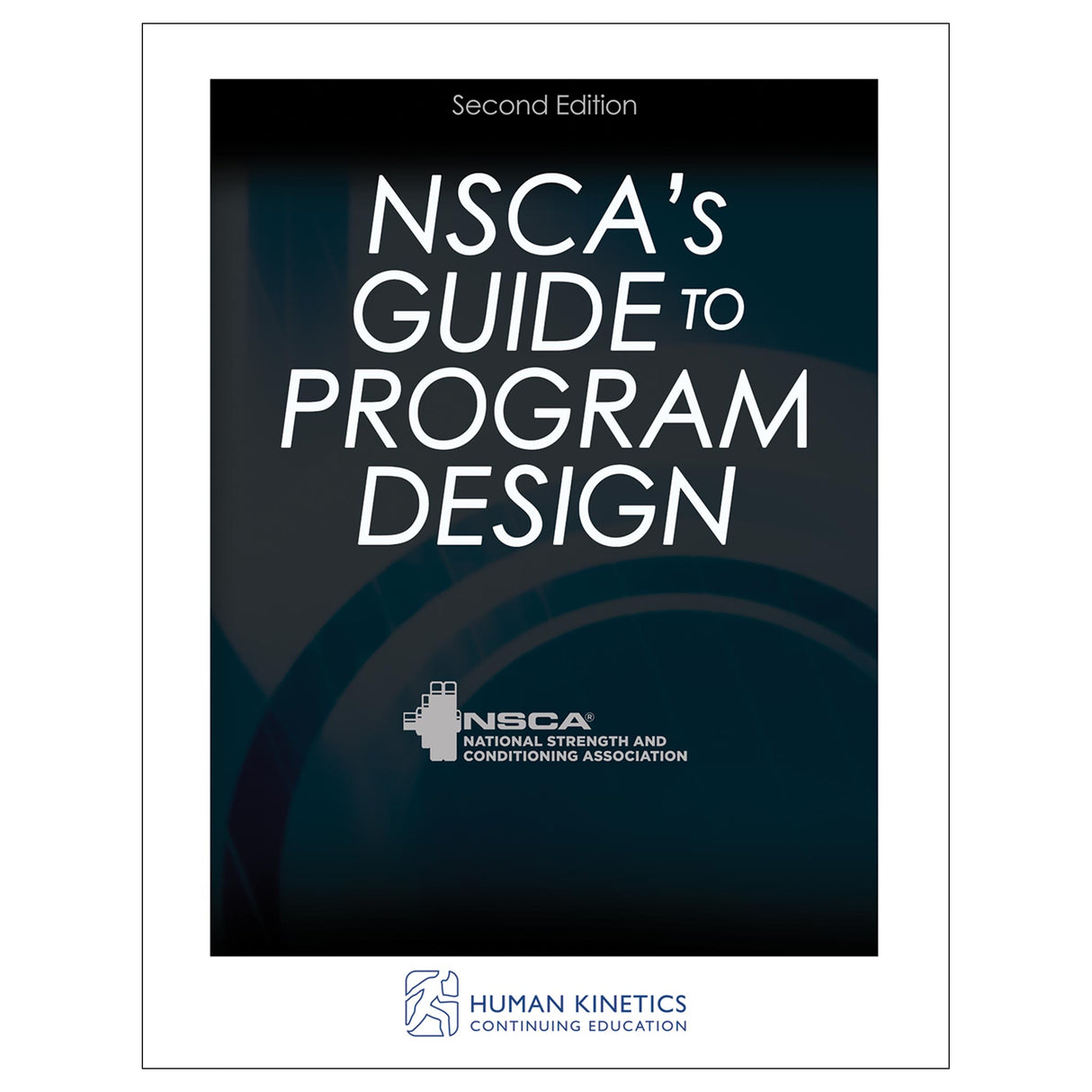NSCA's Guide to Program Design 2nd Edition Online CE Exam With Print Book
Author: Human Kinetics
$116.00 USD
Human Kinetics strongly recommends that you complete your exam within the calendar year of your date of purchase to ensure approved credits do not expire for your organization.
- NSCA's Guide to Program Design, Second Edition, book
- Online continuing education exam
Straightforward and accessible, NSCA’s Guide to Program Design details the considerations and challenges in developing a program for each key fitness component. It shows you how to begin the process of assessing athlete needs as well as how to select performance tests. Dynamic warm-up and static stretching protocols and exercises are addressed before moving into in-depth programming advice based on a performance goal. The final two chapters help you put it all together with a discussion of training integration, periodization, and implementation.
With sample workouts and training plans for athletes in a variety of sports, technique photos and instructions for select drills, and a sample annual training plan, you will be able to assemble effective and performance-enhancing training programs for all your athletes.
After reading the book, certified professionals can take the companion CE exam to earn continuing education credits.
Learning Objectives
- Create sport- and position-specific strength and conditioning programs by assessing athlete needs to optimize health, improve performance, and reduce injury risk.
- Build evidence-based programs using quantitative assessments and sport-specific profiles to set goals, evaluate effectiveness, and support development.
- Include a well-designed warm-up in every practice and competition to prepare athletes, enhance performance, and set the tone for activities.
- Design resistance training programs to boost strength, power, endurance, and performance while adapting to athlete progress and needs.
- Increase muscle power by implementing advanced techniques in strength and conditioning programs.
- Name some of the neuromuscular, metabolic, and cardiovascular adaptations that occur with anaerobic conditioning.
- Explain how physiology, exercise economy, performance psychology, and lifestyle affect aerobic endurance performance.
- Develop agility by enhancing speed, movement technique, muscular strength, and acceleration ability.
- Implement speed training programs to optimize high-velocity movement by focusing on factors such as the stretch-shortening cycle and muscular strength.
- Design core training programs that emphasize trunk stabilization, performance improvement, balance, and injury reduction.
- Apply periodization principles to develop training programs and align cycles with individual athlete needs.
- Incorporate sport-specific periodization plans to enhance performance and recovery.
Audience
Certified strength and conditioning professionals, personal trainers, and athletic trainers.Jennifer B. Fields, Andrew R. Jagim, Margaret T. Jones
Chapter 2. Athlete Assessment and Performance Evaluation
Jennifer B. Fields, Andrew R. Jagim, Margaret T. Jones
Chapter 3. Movement Preparation
David J. Heikkinen, N. Travis Triplett
Chapter 4. Resistance Training
Nicholas A. Ratamess
Chapter 5. Power Training
Robert U. Newton, William J. Kraemer, Disa L. Hatfield, Tunde K. Szivak
Chapter 6. Anaerobic Conditioning
Sean Collins
Chapter 7. Aerobic Conditioning
Ludmila Cosio-Lima, Nicole C. Dabbs
Chapter 8. Agility Training
Robert G. Lockie, J. Jay Dawes
Chapter 9. Speed Training
Chelscie K. Greene, Joanette M. Gonzalez, Andrew J. Galpin
Chapter 10. Anatomical Core Training
Ronald L. Snarr, Lawrence W. Judge
Chapter 11. Training Integration and Periodization
G. Gregory Haff, Erin E. Haff
Chapter 12. Training Program Integration and Implementation
Corey Dulak-Sigler, Michael G. Miller





